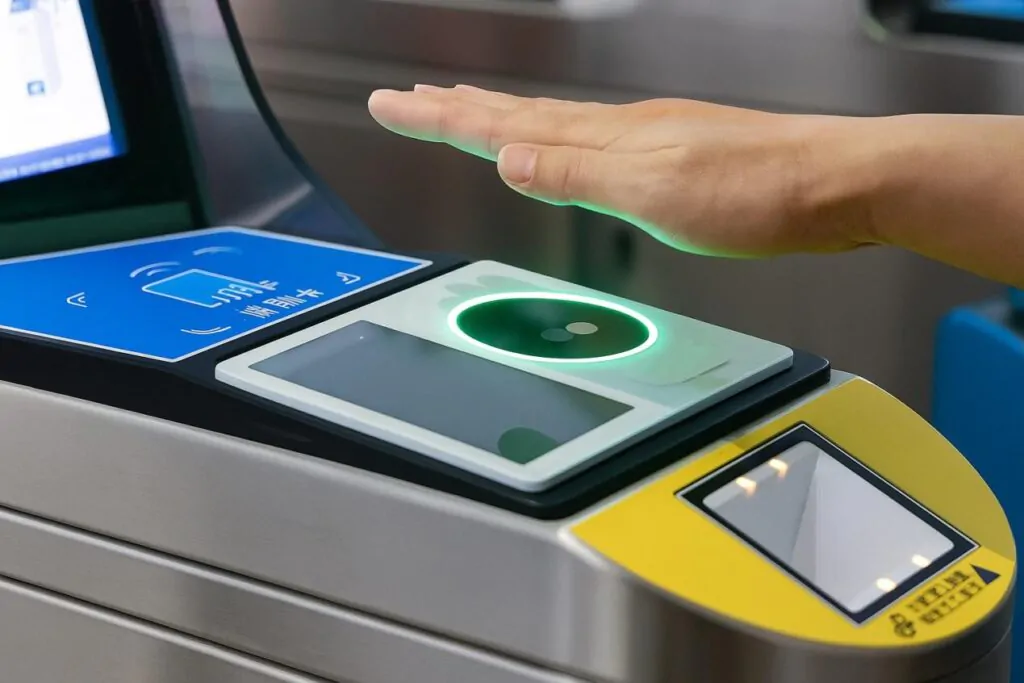🌐 Introduction
Many users assume their mobile operating system (Android or iOS) determines how they can use their digital wallet.
But with Palm Pay, that’s no longer the case.
This technology allows users to pay directly with their palm — securely, instantly, and without needing to carry or even unlock their phone.
At X-Telcom, we’ve engineered a system where Palm Pay and e-Wallets operate independently of any mobile OS, ensuring the same seamless experience for every user.
💡 Core Concept
Palm Pay (or any e-Wallet integrated with palm biometrics) is not tied to Android or iOS.
The biometric identity — your palm — is managed by the hardware terminal and backend system, not by the phone.
Once a user’s palm is enrolled, it becomes their permanent access key for payments, regardless of what smartphone they use or whether they have one at all.
🔒 Why Palm Pay Is Independent from Android and iOS
1️⃣ Registration
Palm enrollment is performed on certified hardware terminals such as POS devices, kiosks, or gates — never on a phone.
- The Palm Vein Scanner captures both RGB + IR images of the palm.
- The data is encrypted and uploaded to the e-Wallet’s backend system.
- No mobile device or operating system is involved in the biometric collection process.
2️⃣ Transaction Execution
Once enrolled, the user can simply place their hand over a Palm Scanner terminal:
- The scanner validates the palm against the backend record.
- The backend authorizes the transaction.
- Funds are deducted from the user’s wallet — no phone required.
3️⃣ Account Binding
- The Palm ID is securely linked to the wallet account in the backend, not within the mobile device.
- This means users can switch phones or upgrade operating systems, and their palm payment function will still work seamlessly.
4️⃣ Account Management
Wallet apps on both Android and iOS can still be used for:
- Setup and linking cards
- Viewing transaction history
- Adjusting limits and preferences
These app features work identically across both platforms because the OS only handles interface management, not authentication or transaction approval.
👋 Customer-Friendly Example
Think of Palm Pay like face or fingerprint payment — except the biometric data is stored securely in the backend, not your phone.
Here’s how it works:
- You register your palm once on a certified terminal.
- The data is encrypted and saved to your wallet’s backend system.
- You can later make payments by scanning your palm on any supported POS terminal.
Even if you use an Android phone, switch to an iPhone, or don’t bring your phone at all — the payment still goes through.
Your palm is your key, and your wallet account lives in the cloud.
🧩 Summary for Clients
✅ Palm Pay and e-Wallet systems are OS-independent.
- The Palm Vein Scanner + backend perform the authentication and payment.
- The mobile OS only affects app interface, not payment execution.
✅ Users can pay even without a phone.
- Once enrolled, authentication happens entirely through the terminal and backend, not the smartphone.
✅ Cross-platform consistency.
- The experience is identical on Android, iOS, or even when no device is present.
✅ Conclusion
Palm Pay connects your identity directly to your wallet — not your phone.
By removing operating system dependency, X-Telcom’s Palm Vein Technology delivers a universal payment experience that’s secure, inclusive, and future-ready.
This design ensures every customer — regardless of device — can pay confidently with a simple wave of the hand.
🌐 Learn more:https://x-telcom.com/palm-vein-reader/
Tags:
#XTelcom #PalmVeinTechnology #PalmPay #eWallet #Fintech #BiometricPayment #ContactlessPayment #DigitalIdentity #Security #Innovation #Android #iOS



